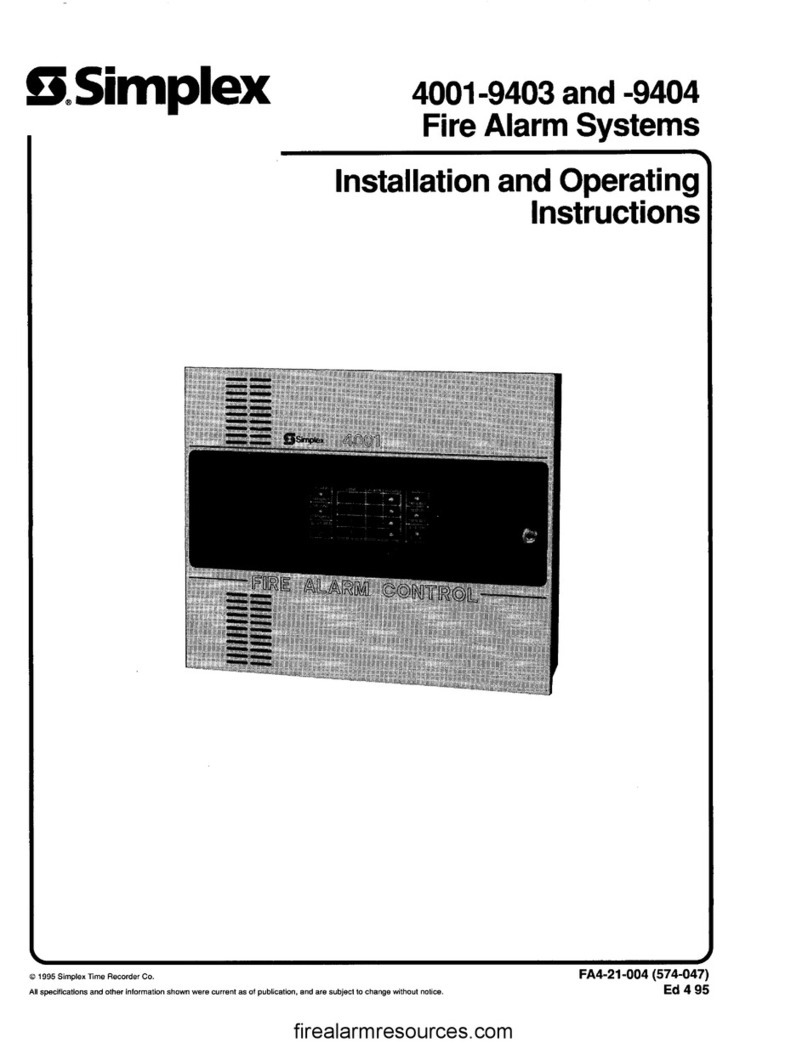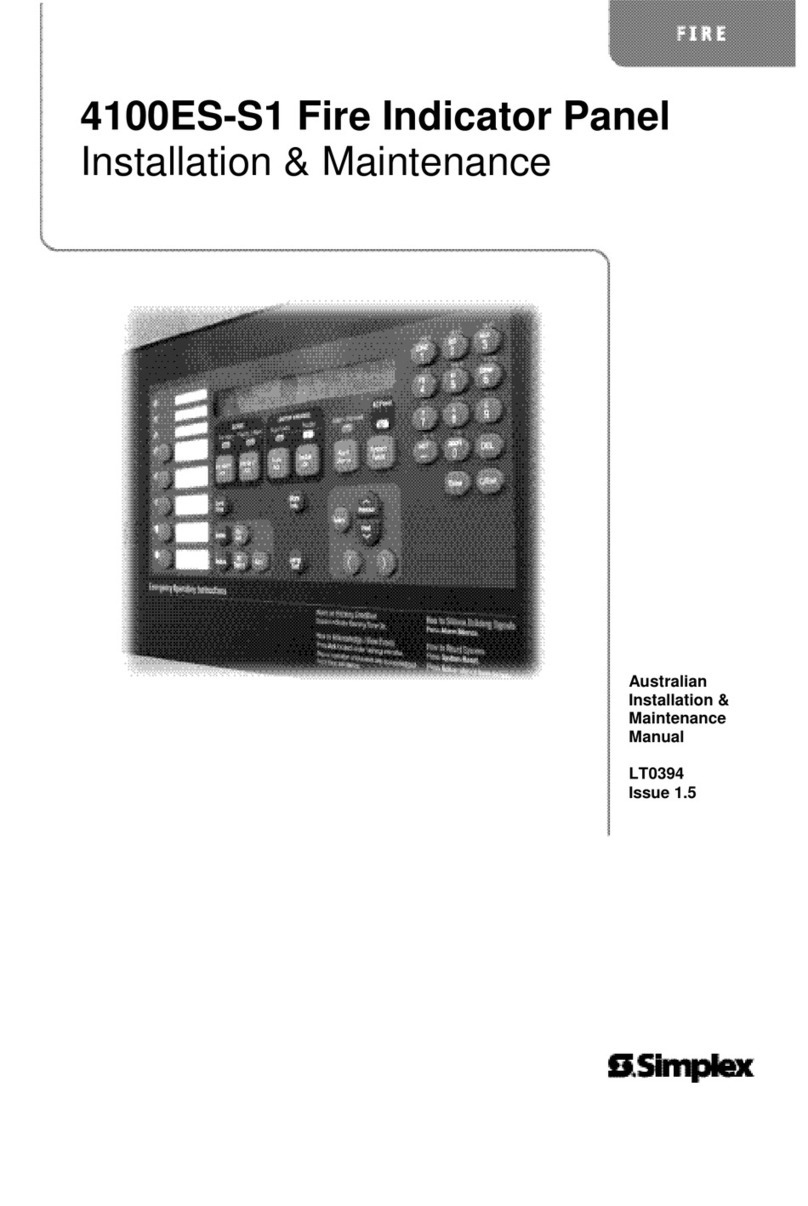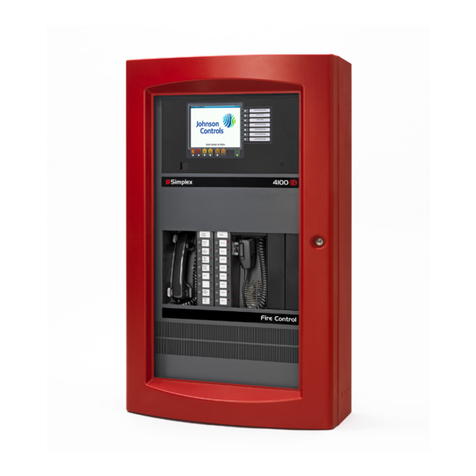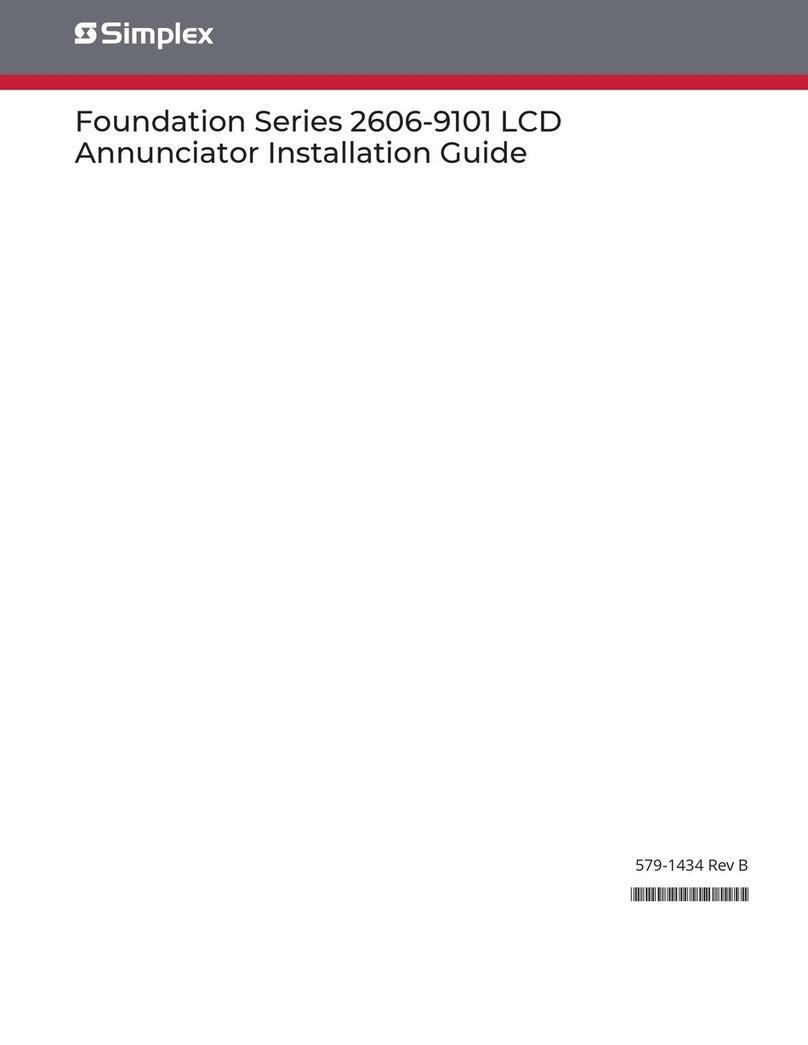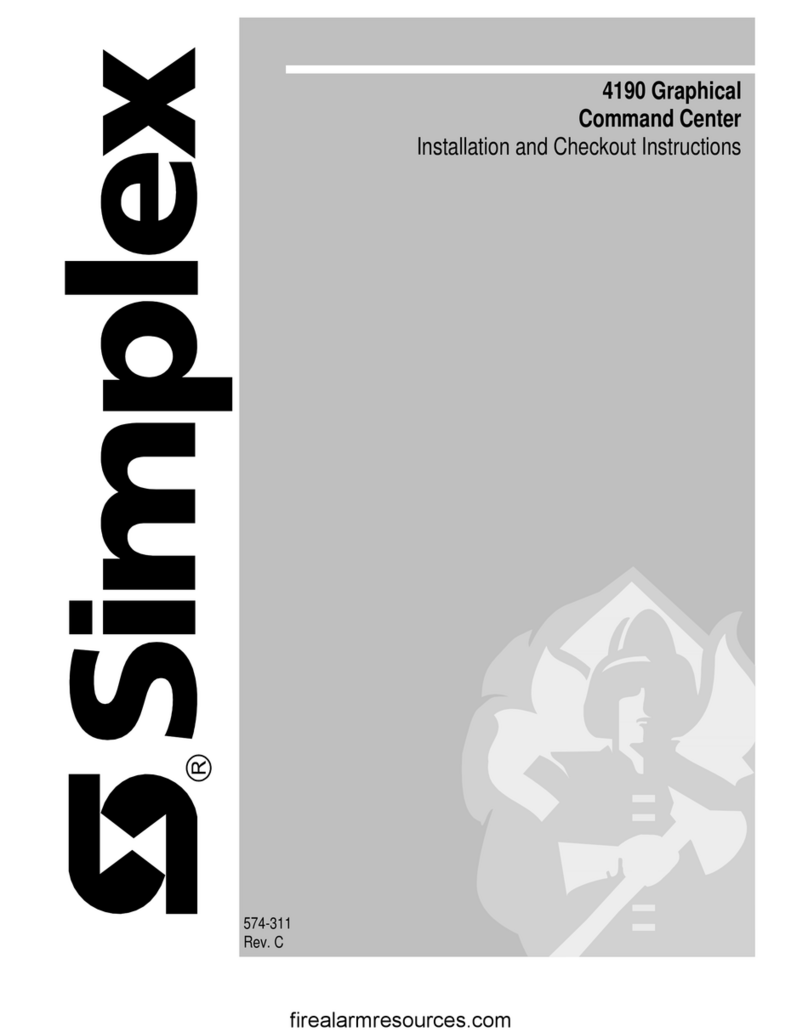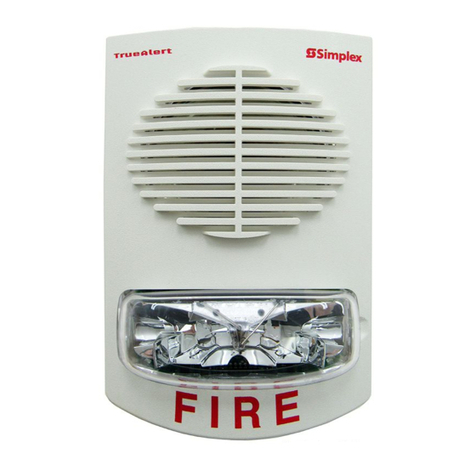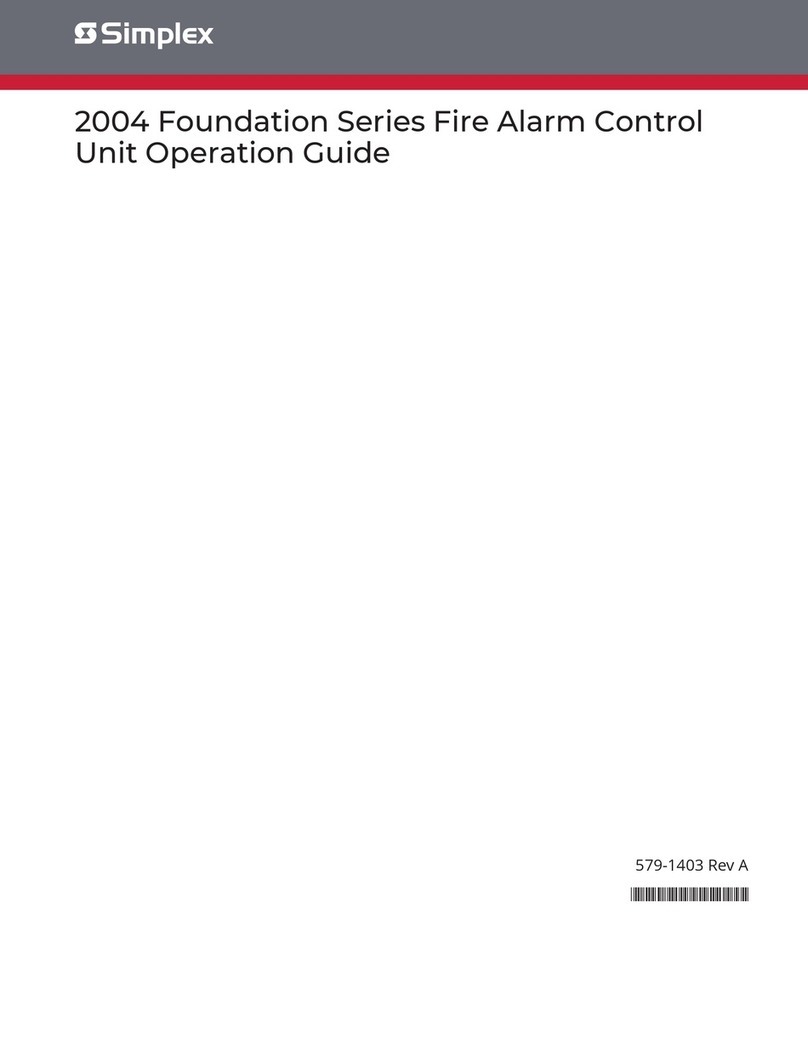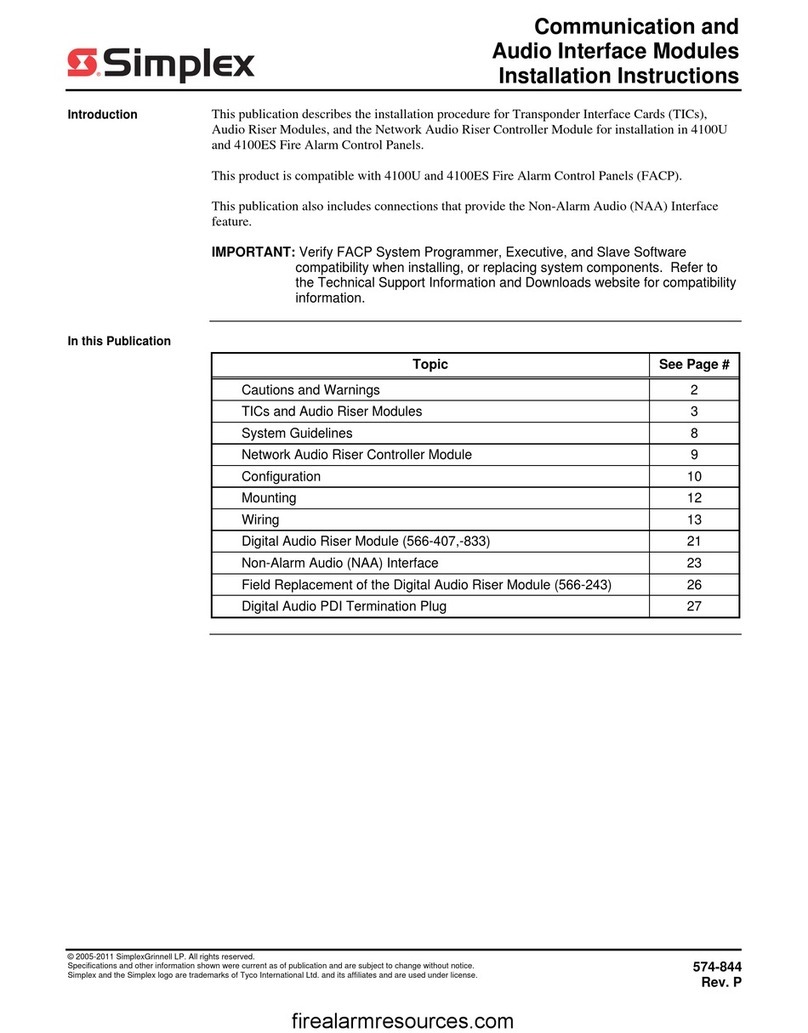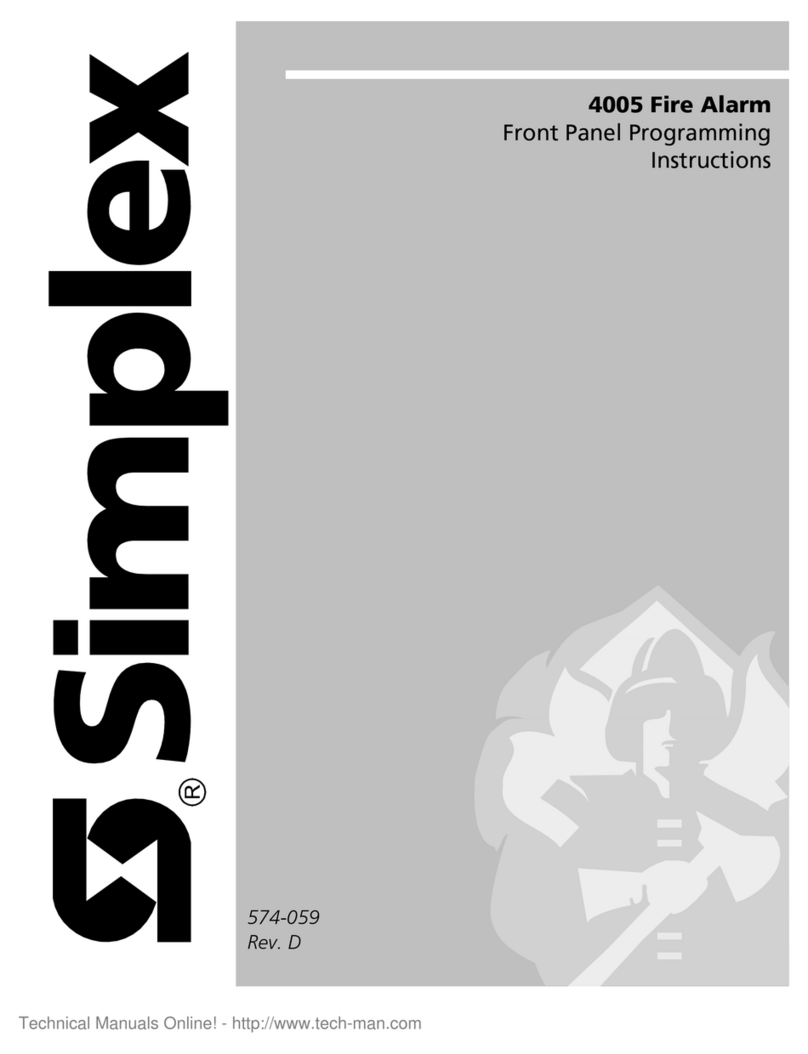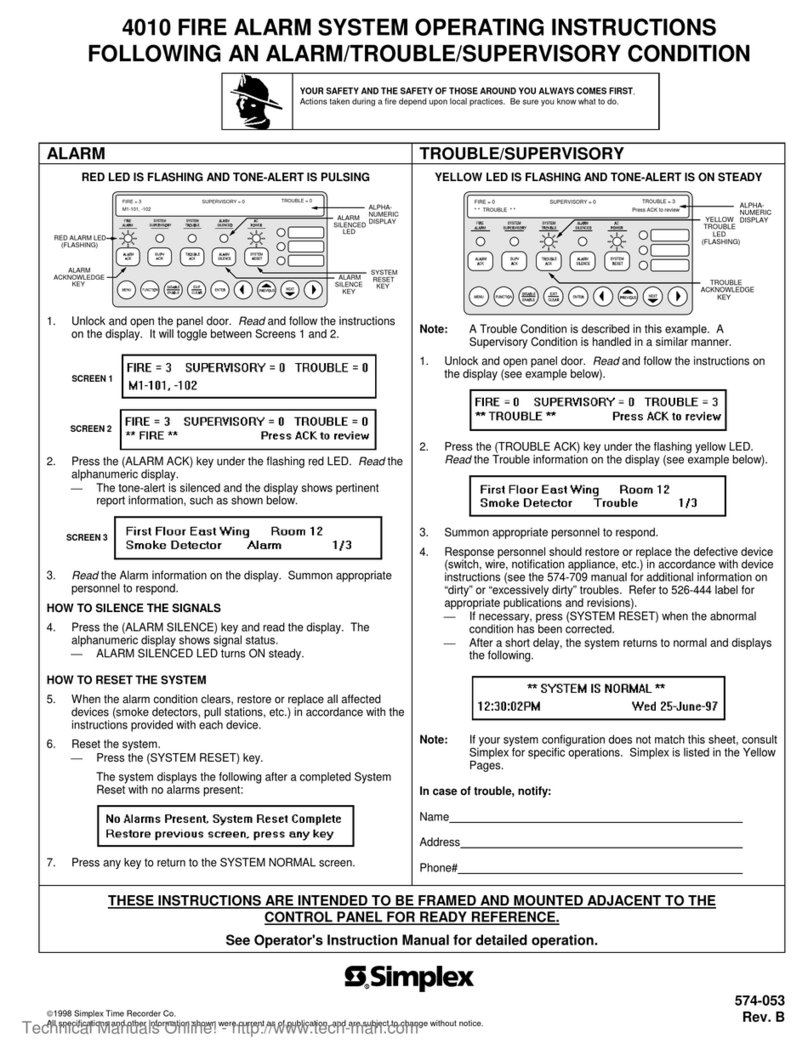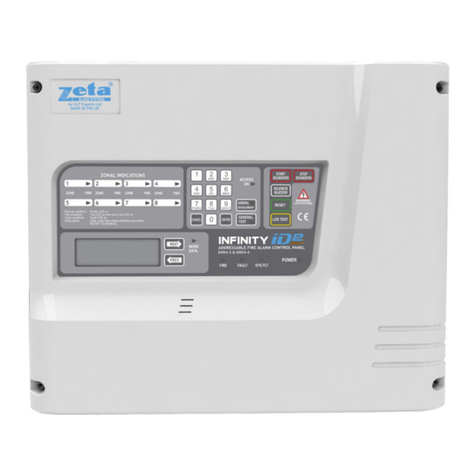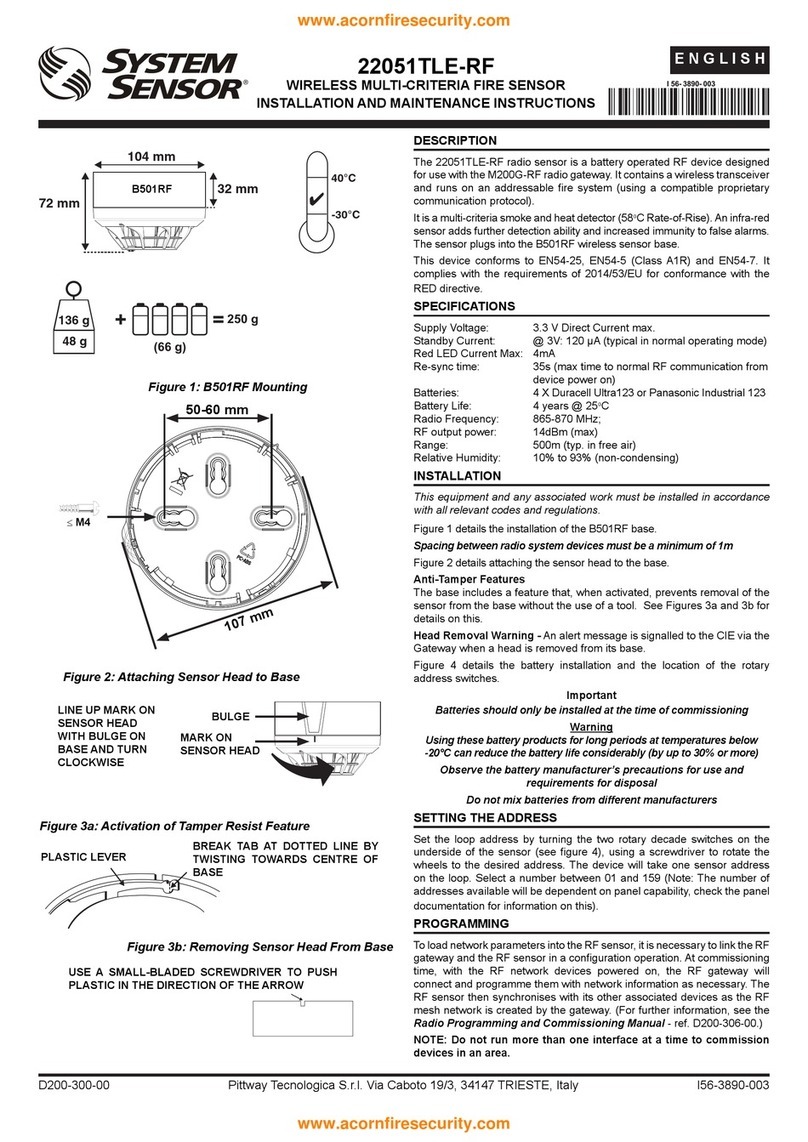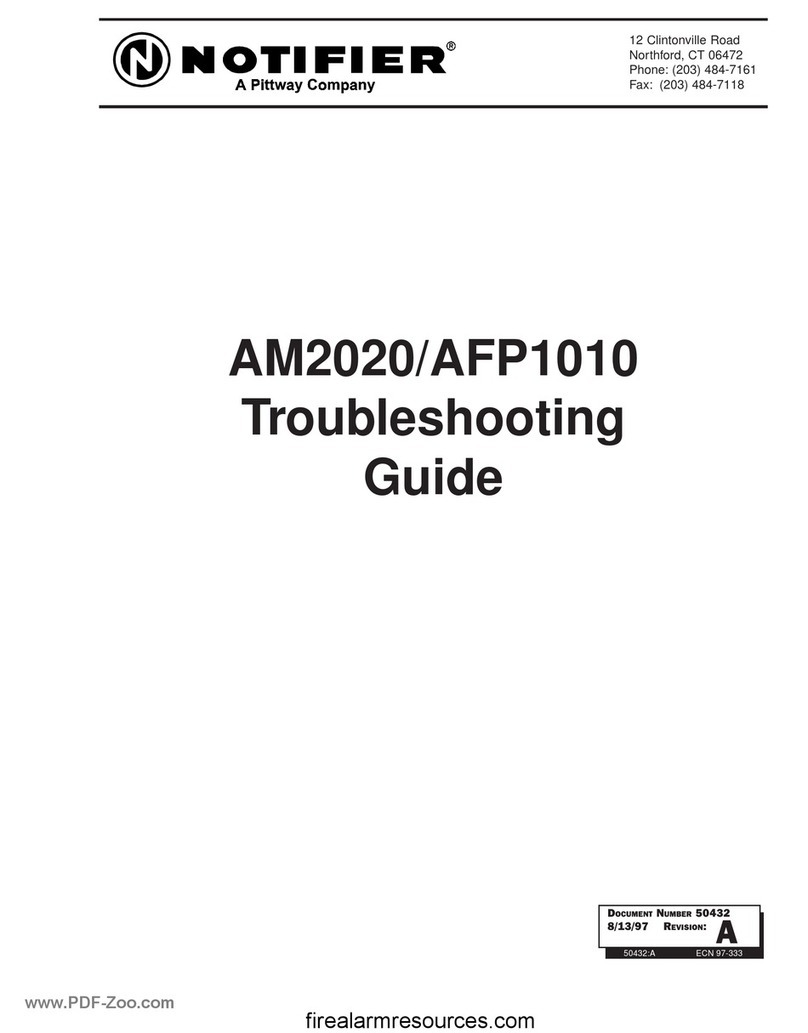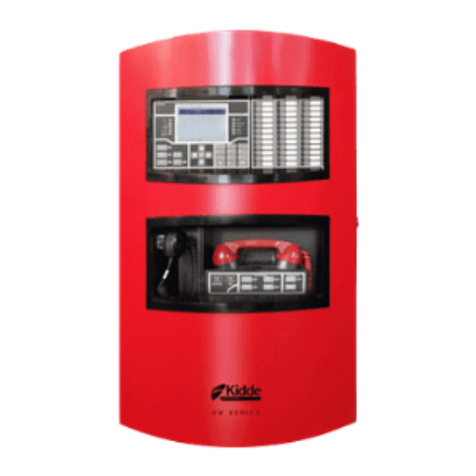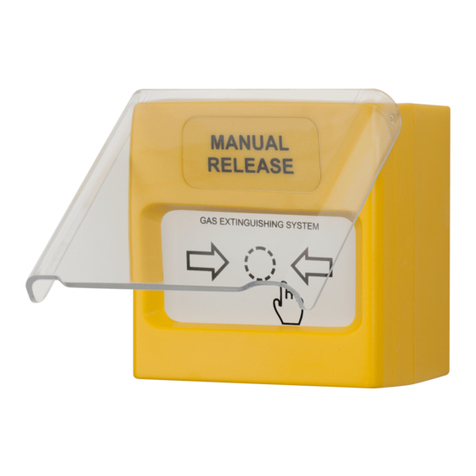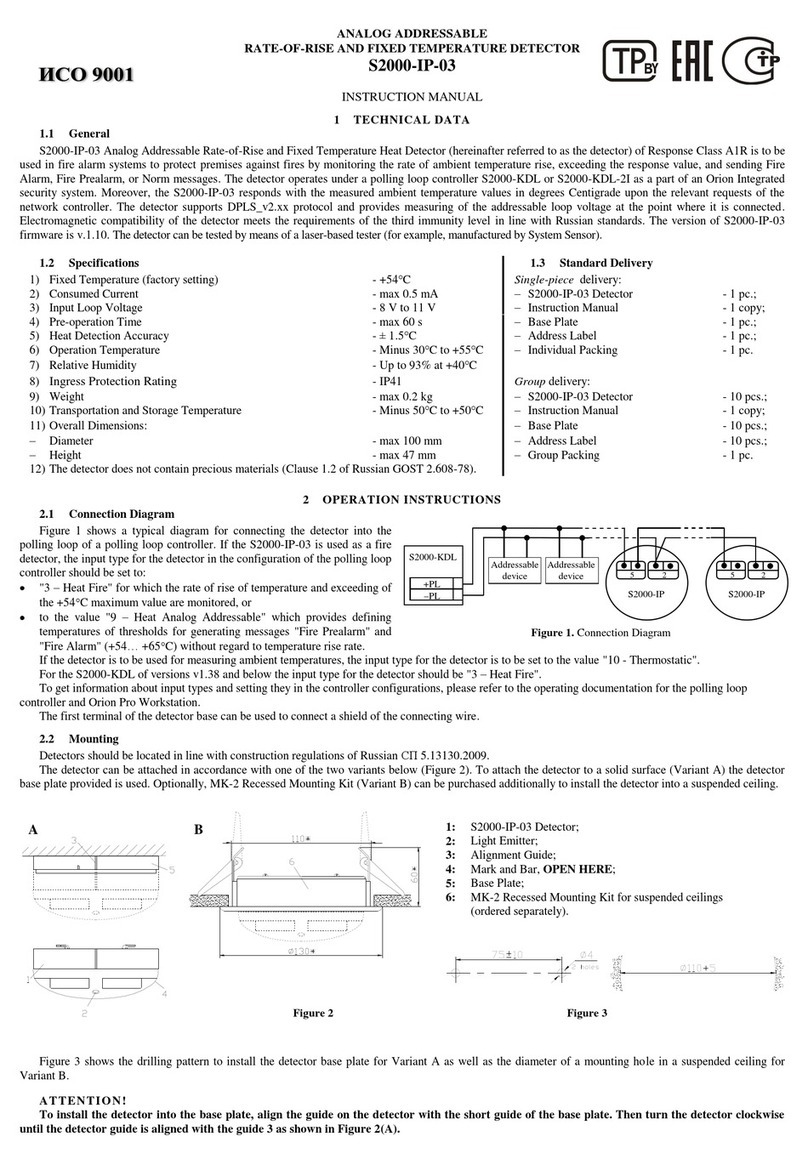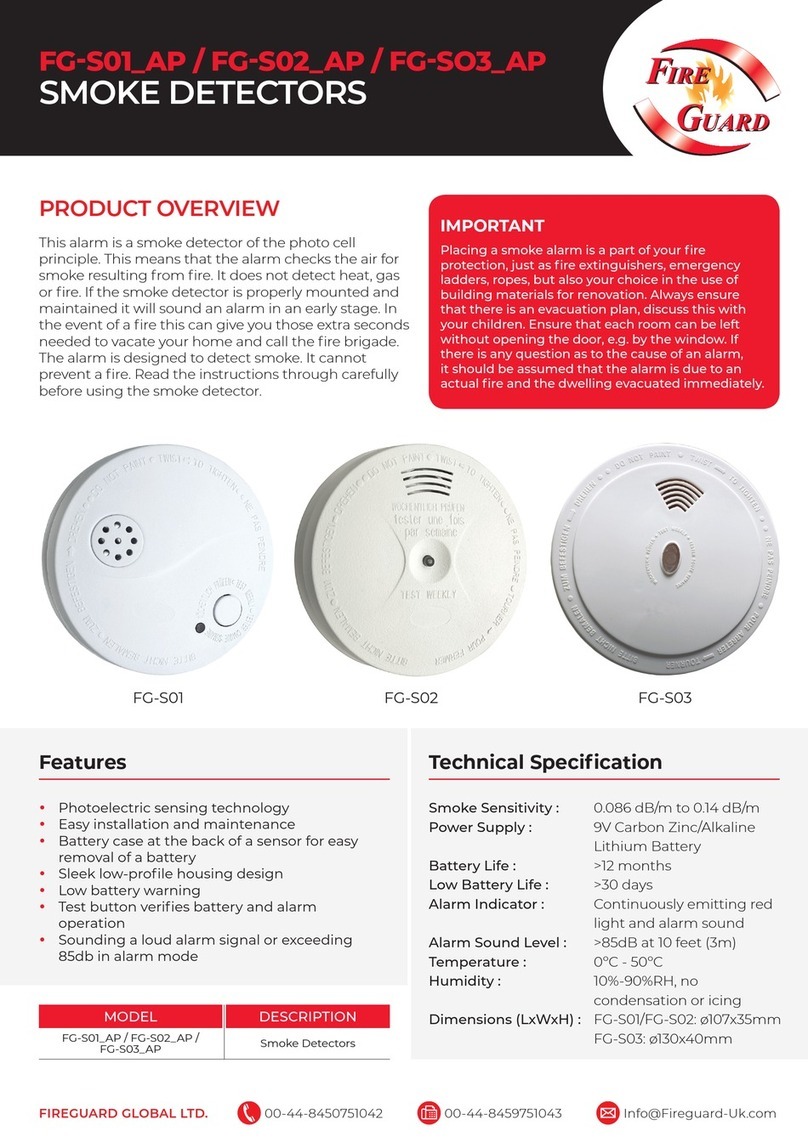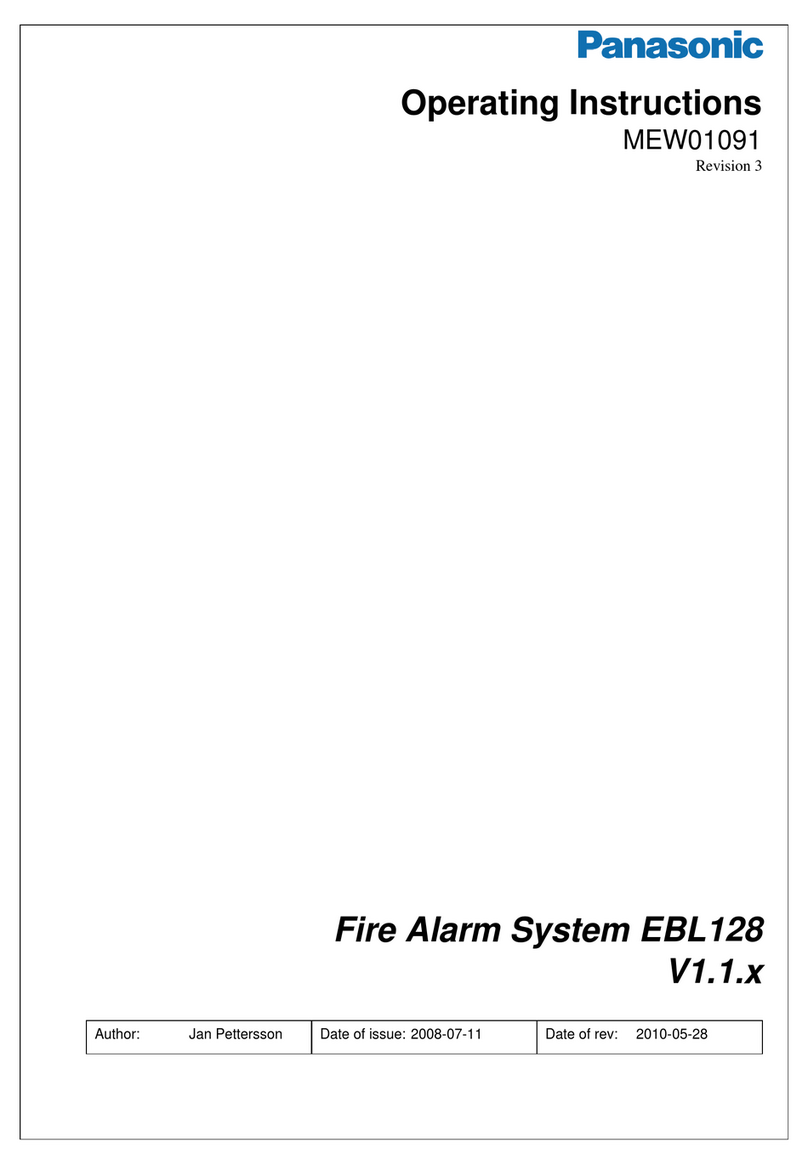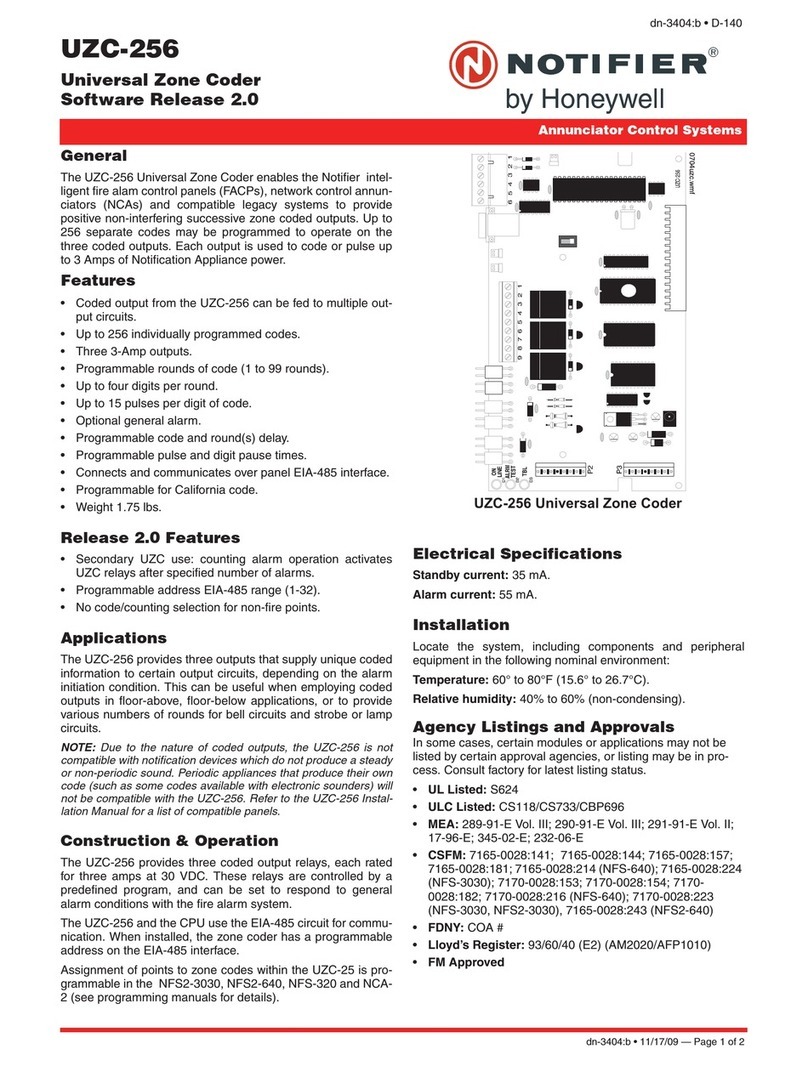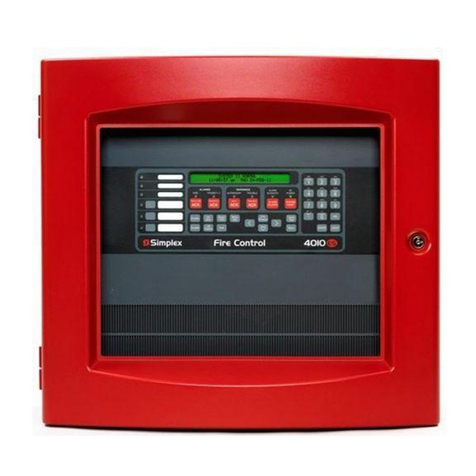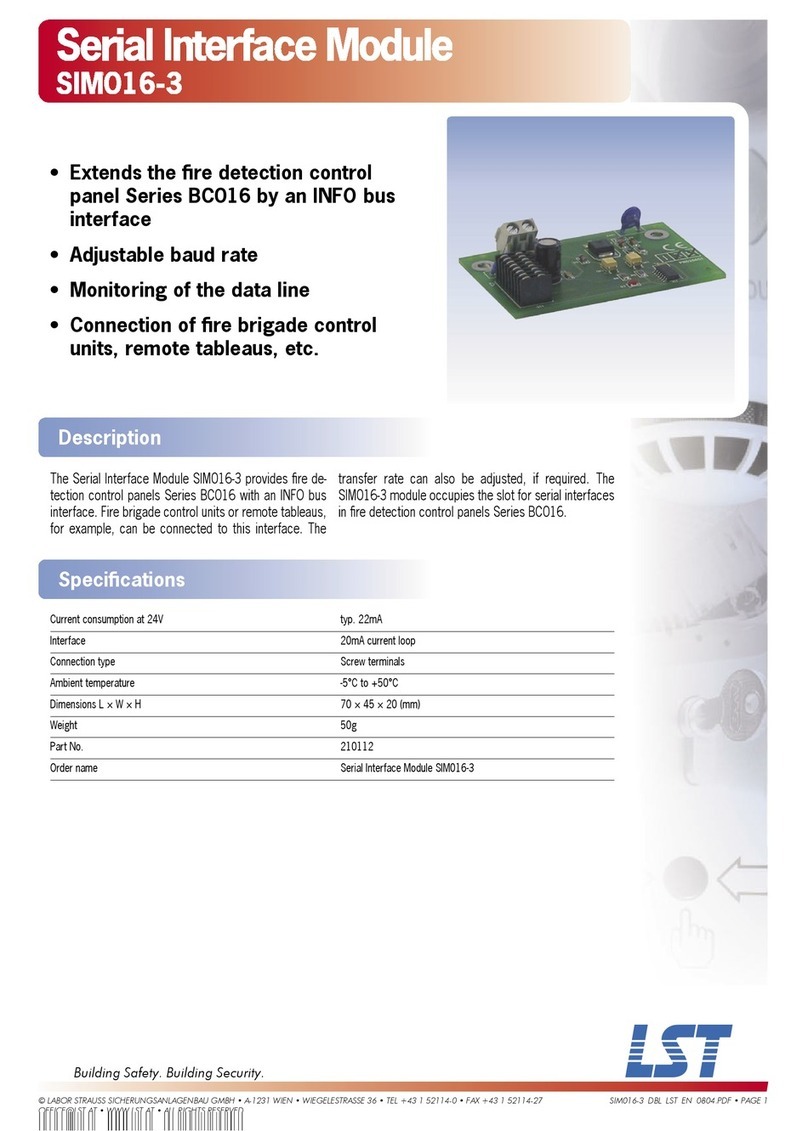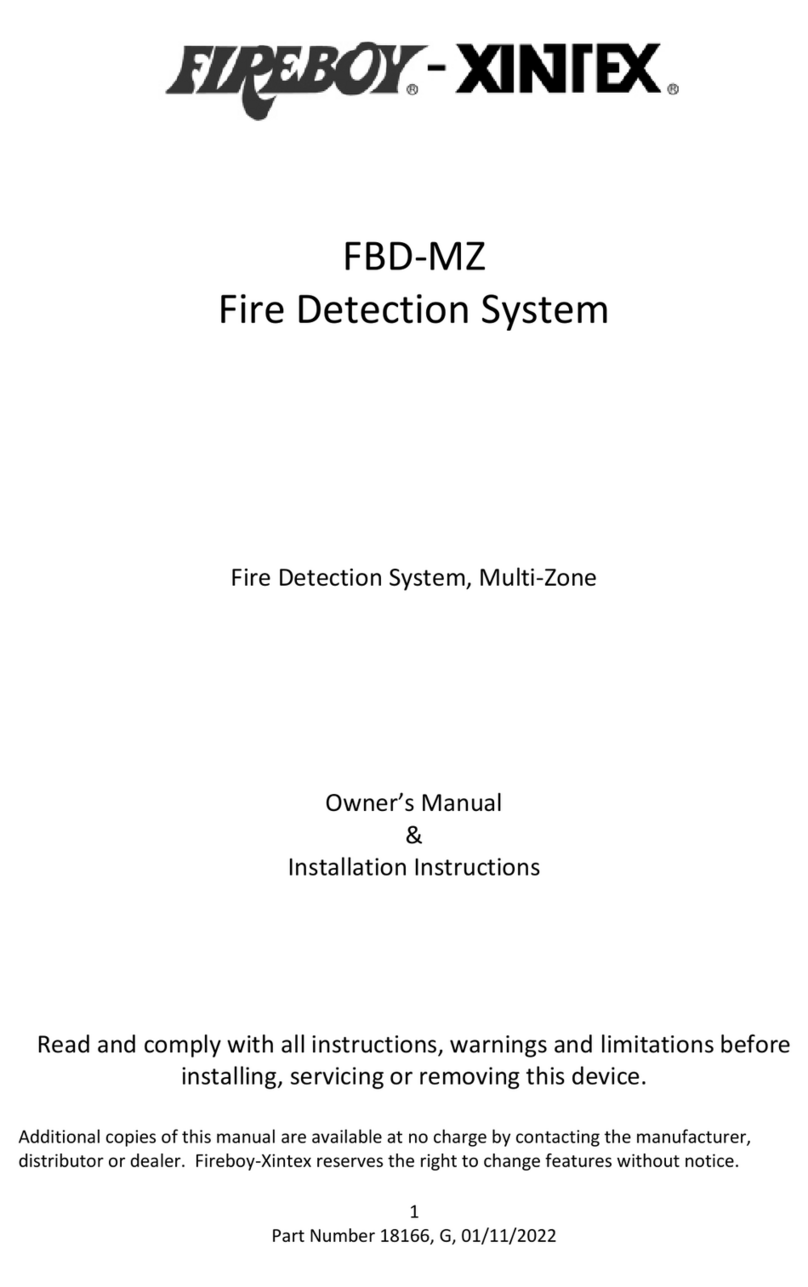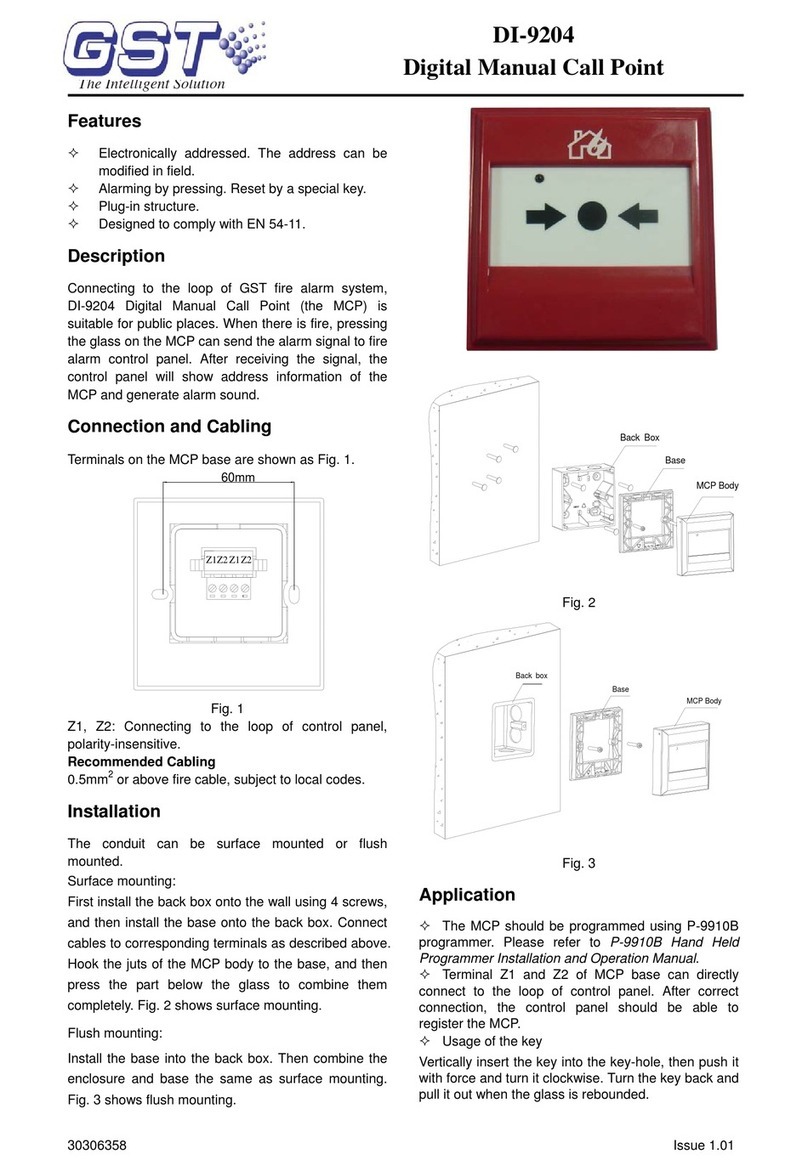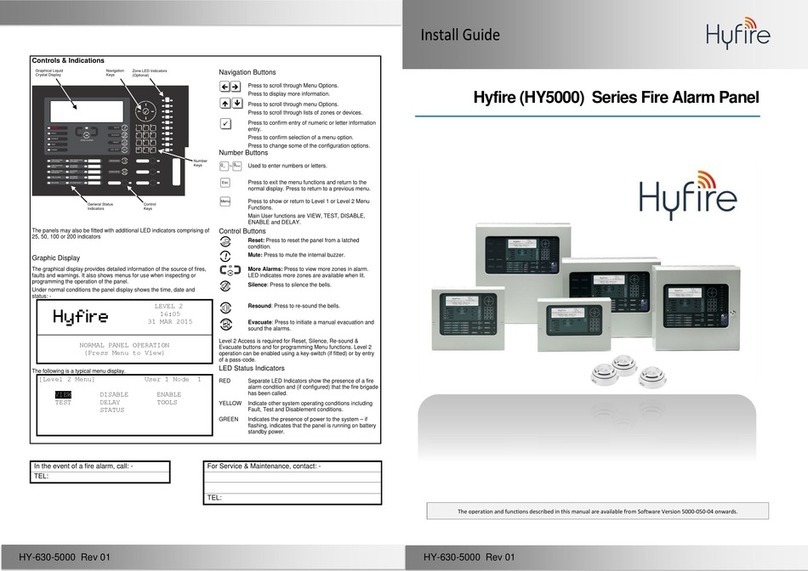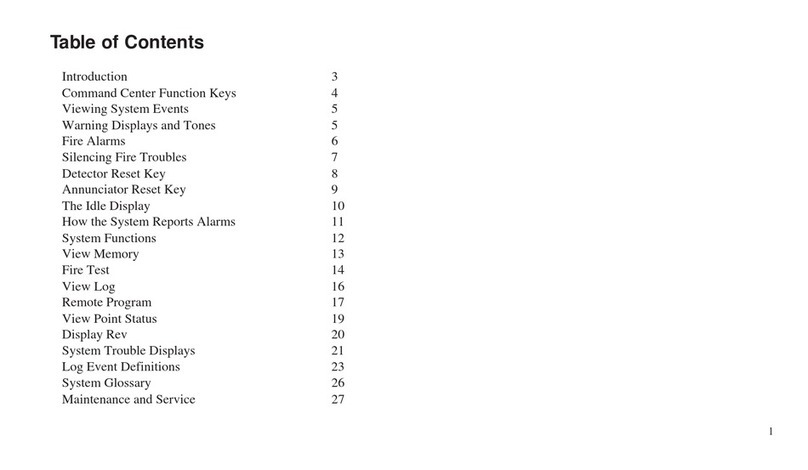
4903 TrueAlertCeiling-Mount A/V
Installation Instructions
2000 Simplex Time Recorder Co., Westminster, MA 01441-0001 USA
All specifications and other information shown were current as of publication, and are subject to change without notice.
TrueAlert is a trademark of Simplex Time Recorder Company.
Suffix “C” or “CA” following an eight-digit product ID number denotes ULC-listed product.
574-929
Rev. B
Cautions and Warnings
DO NOT INSTALL ANY SIMPLEX PRODUCT THAT APPEARS DAMAGED. Upon unpacking your Simplex product, inspect
the contents of the carton for shipping damage. If damage is apparent, immediately file a claim with the carrier and notify Simplex.
ELECTRICAL HAZARD -Disconnect electrical power when making any internal adjustments or repairs.
Servicing should be performed by qualified Simplex Representatives.
STATIC HAZARD -Static electricity can damage components. Therefore, handle as follows:
1. Ground yourself before opening or installing components.
2. Keep uninstalled component wrapped in anti-static material at all times (use the 553-484 Static Control Kit).
RADIO FREQUENCY ENERGY -This equipment generates, uses, and can radiate radio frequency energy and
if not installed and used in accordance with the instruction manual, may cause interference to radio
communications. It has been tested and found to comply with the limits for a Class A computing device pursuant
to Subpart J of Part 15 of FCC Rules, which are designed to provide reasonable protection against such
interference when operated in a commercial environment. Operation of this equipment in a residential area may
cause interference in which case the user, at his own expense, will be required to take whatever measures may be
required to correct the interference.
TrueAlertCeiling-Mount A/V Operation
The 4903 TrueAlert Audible/Visible (A/V) unit (see Figure 1) is a
ceiling-mount notification appliance that provides an audible and/or visible
warning indication of an alarm condition when activated from a TrueAlert-
compatible control panel of a UL-listed Simplex Fire Alarm System. When the
notification appliance emits sound and/or light, it indicates the possibility of
an emergency situation that requires your immediate attention.
The TrueAlert A/V unit is a notification appliance that operates only on a
TrueAlert-compatible Signaling Line Circuit (SLC). The appliance is
supervised via communications with the TrueAlert Addressable Controller
(rather than via conventional appliance supervision).
The Ceiling-Mount TrueAlert A/V unit responds to communication signals over the circuit from a TrueAlert-compatible
panel. Coded messages from the TrueAlert Addressable Controller turn on the A/V strobe and horn. The Strobe can
only be operated through a 4009-9401 TrueAlert Addressable Controller using Simplex TrueAlert Comm Channel
communications. The appliance is supervised via communications with the TrueAlert controller (rather than via
conventional current flow supervision).
The A/V horn provides selectable high/low volume sound pressure levels with audible output types of Steady, Temporal, and
March Time (fast/slow). The compatible 4009 TrueAlert Addressable Controller or FACP is used to configure the features.
Note: The TrueAlert Ceiling-Mount A/V will not operate on a conventional NAC.
TrueAlert ceiling-mount A/Vs are available rated at 15 candela, 75 candela, and 110 candela. Table 1 lists the available
ceiling-mount A/V models.
Table 1. Ceiling-Mount TrueAlert A/V Models
Description Model Cover Color
Ceiling-Mount A/V 15 CANDELA 4903-9459
Ceiling-Mount A/V 75 CANDELA 4903-9460
Ceiling-Mount A/V 110 CANDELA 4903-9461
White
Figure 1. TrueAlert Ceiling-Mount A/V



